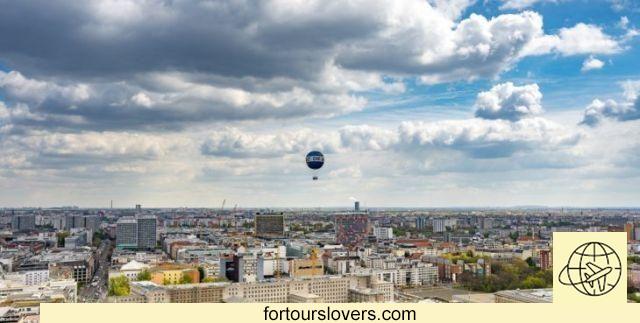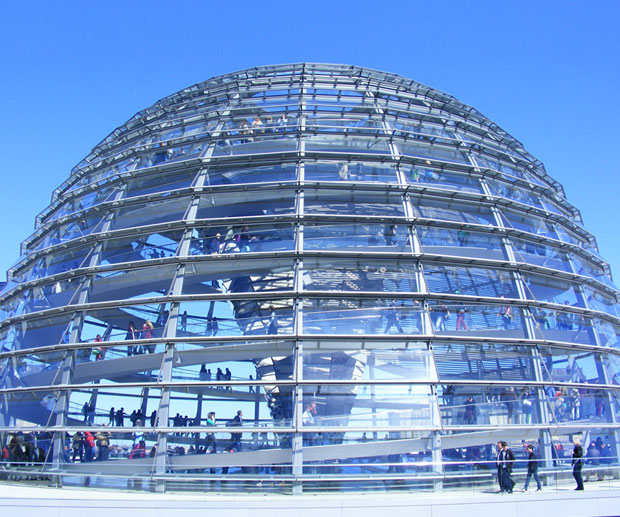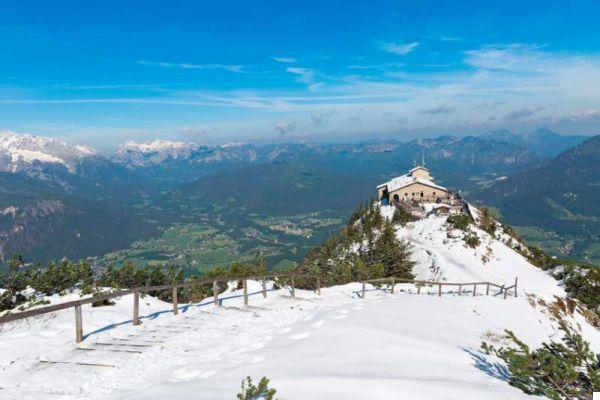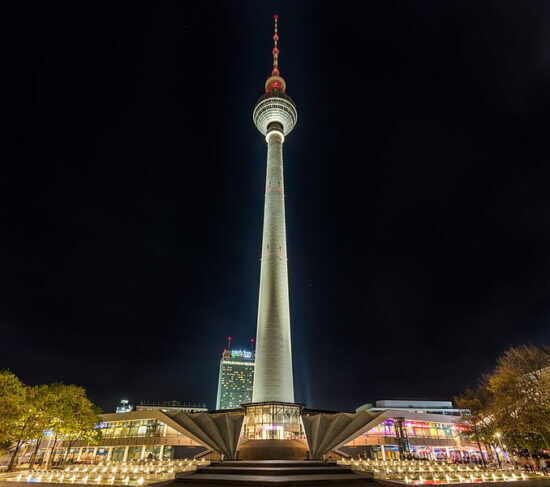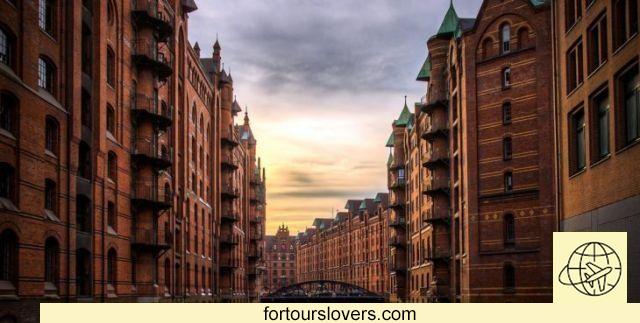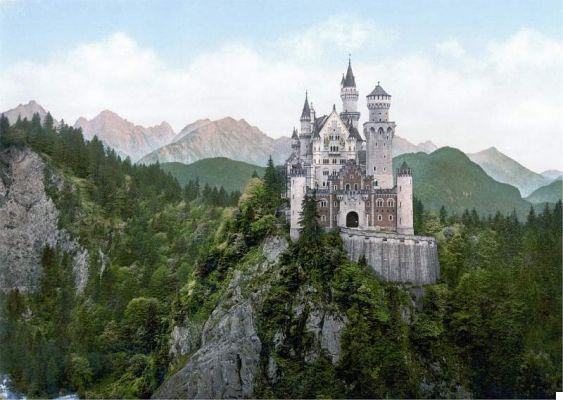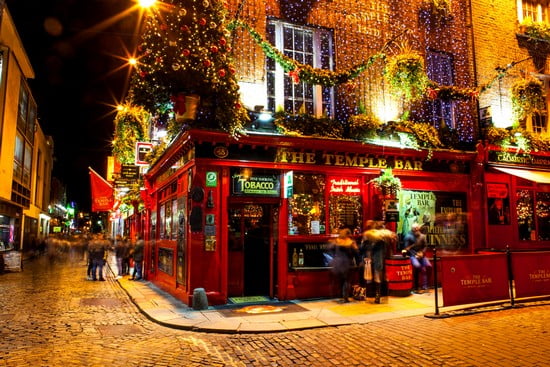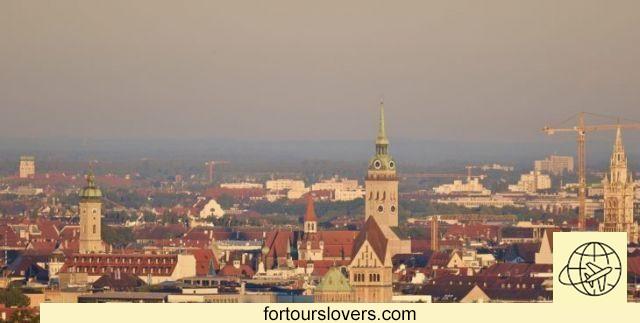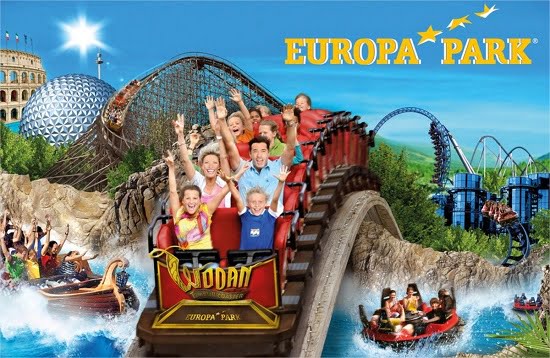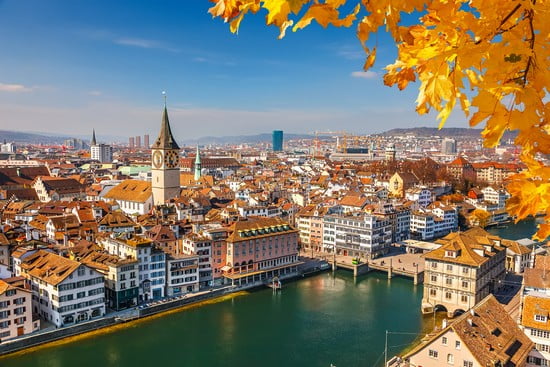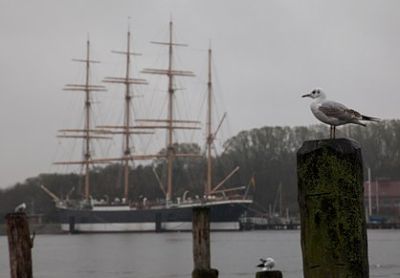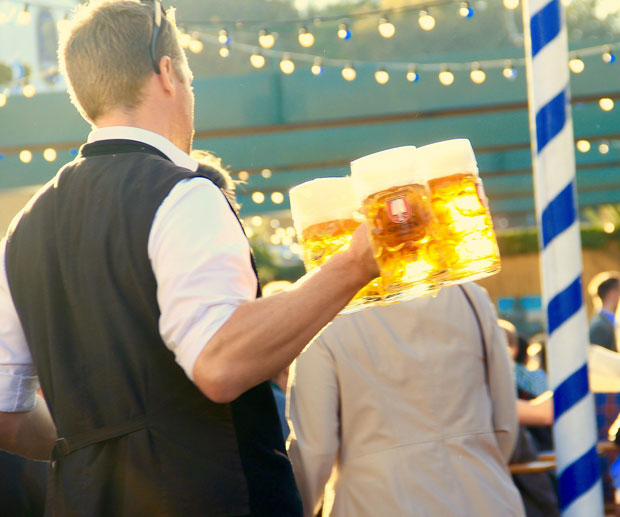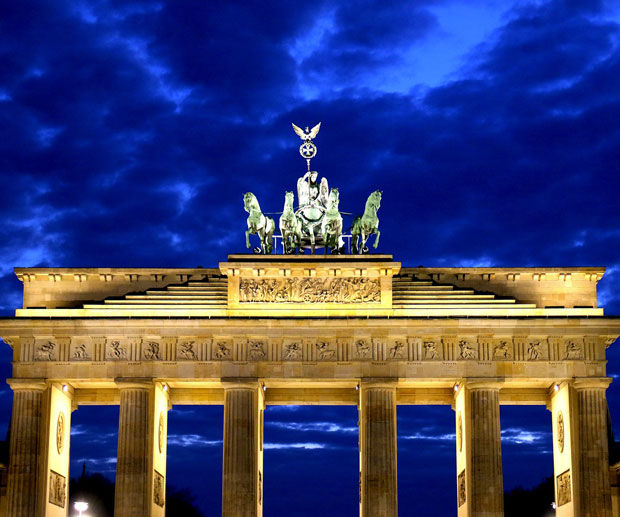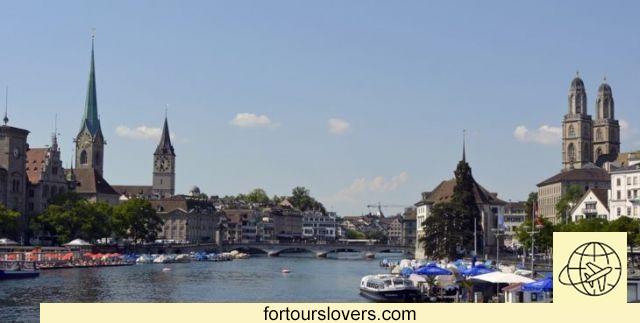
Zurich
11 things to do and see in Zurich and 1 not to doAlready in Roman times Zurich (Turicum in Latin) was an important one customs station where goods in transit between Gaul and Rezia were taxed. This is to say how old the custom with large flows of money is in these parts. Even the Protestantism, which spread in the city thanks to the pastoral work of theologian Huldrych Zwingli, has always seen profit as a sign of divine grace, in fact encouraging the industriousness and skills of artisans and merchants. The banks did the rest even though, at some point, the pervasiveness of the finance risked overshadowing the city's many attractions. From churches, to the lake, from shopping, to nightlife, to museums, Zurich is deeply detached from the tourist imagination - made up of enchanting landscapes, snow and valleys - traditionally associated with Switzerland. A city to be discovered, where the elevated quality of life lives with one transgressive spirit which has also created some problems in the past. Today, however, everything is resolved and the city has been living a long and happy growing season since the second half of the 90s. Below, our tips on what to do and see in Zurich. Happy reading.
1 Grossmünster
According to the Grossmünster legend, Zurich cathedral, would have been built on tombs of the patron saints Felice and Regula. The story goes that the two martyrs, accompanied by their servant, Essuperanzio, paid with their lives for the intense proselytizing work carried out in the city in favor of Christianity. They were beheaded at the Wasserkirche, another famous church in Zurich, and yet - it is said - even without a head, they managed to reach the place where they would have been buried and where, centuries later, the emperor Charlemagne he would have the church built in their suffrage. Myth aside, Grossmünster is a must for anyone visiting Zurich for the first time. The panorama which is enjoyed from Karlsturm, one of the two towers of the cathedral, explains by itself why the church is worth visiting. Church that from an architectural point of view offers a precious testimony of the eighteenth century Gothic-Baroque. The interior, a three naves, is very sober, in line with the precepts of Huldrych Zwingli, which here gave birth to an academy of theology, the original cell of what will later be theuniversity of Zurich. To see the stained glass windows of the choir decorated by Augusto Giacometti, a Swiss artist who lived between the 2009th and XNUMXth centuries, and the decidedly more recent ones, completed in XNUMX, by the German artist Sigmar Polke. German as well Official site of the church, essential for knowing days, times, prices and organizing guided tours: www.grossmuenster.ch
2 Fraumünster
Those who want to get on the trail of Marc Chagall (1887-1985) in addition to the Nice museum, it will do well to visit Zurich. In fact, in the largest Swiss city, the multifaceted Belarusian artist in 1980 designed the stained glass windows of the choir and the rose window of the Fraumünster, Gothic abbey from the XNUMXth century long convent of the Benedictine nuns. In addition to the colored windows of Chagall, and those of Augusto Giacometti, Fraumünster, which literally means Cathedral of Our Lady, Is famous for its northern tower overlooking the city sky line. Also worth seeing are the frescoes by Paul Bodmer, one of the most important Zurich artists of the 900th century. For more information on opening and closing times and guided tours consult the Official site: www.fraumuenster.ch
3 Wasserkirche
As is known, the churches are essential to deepen the "Genius loci" of a city. In fact, studying its architecture and works of art allows us to reconstruct the history and protagonists of a specific territory. In the case of the Wasserkirche (lit. "Church on the water"), on the banks of the Limmat river, the story is the one we mentioned when describing Grossmünster. While the cathedral of Zurich, according to legend, is the place where the patron saints Felice and Regola were buried, Wasserkirche would be the one, instead, where the two brothers were beheaded. With the Protestantism and its aversion to the cult of saints, a very paradigmatic change of use of the new course was imposed on the building. From the place of idolatry that it was, according to the spirit of the reform, it first became a goods warehouse and then, in 1632, first municipal library of Zurich. From the architectural point of view, Wasserkirche has preserved thelate Gothic imprint assumed in the fifteenth century. To see, inside, the stained glass windows of the choir decorated by Augusto Giacometti, the local artist who most contributed to the aesthetics of the city churches.
Visiting hours:
Tuesday, 9: 00-00: 00
Wednesday to Friday, 14 pm-00pm
Saturday, 12: 00-17: 00
Visits are not possible during religious services and other events.
4 Bahnhofstrasse
If it is true that in every city there is a street adjacent to the station, it is also true that only Zurich has become one of the main tourist attractions. A little more than a kilometer of road, this is the distance between the train station and Bürkliplatz (where the boats that carry out cruises on the lake dock) in which shop, Department stores, watch shops e Art gallery. The quintessential shopping street that reveals, just in case it were needed, the comfort of most of the inhabitants of Zurich and of the visitors who frequent it for pleasure or for business. That's not all, because Bahnhofstrasse also reveals another aspect of Zurich's "genius loci": the "Swiss" punctuality of means of transport. Both that of the trains that arrive and depart from the station, and that of the trams that connect the city extensively. And again, in order not to miss anything: public parks, benches and excellent restaurants. Not to be missed!
5 Lindenhof
Speaking of Bahnofstrasse we referred, among other things, to benches and public green spaces. A'caution, the one that the directors of Zurich have always assigned to common goods, which explains thevery high quality of life small town. There is not only Bahnofstrasse to testify. To be fully aware of the order and care that characterize the Zurich lifestyle, one must reach Lindenhof, a small hill in the upper part of the city. In this square, in Roman times (XNUMXth century), there was a castle with function of sighting and defense from the incursions of the Alemanni. In the Carolingian period (XNUMXth century), however, Ludovico Il Germanico, grandson of Charlemagne, had his royal residence, symbol of the power exercised over the city. Also here, at the end of the XVIII century, to be precise in 1798, the oath on the Swiss constitution. Today panoramic views e historicity of the site are a source of inspiration for chess fans who, immersed in the quiet of this park, can devote themselves to their "moves" in complete tranquility.
6 Church of San Pietro
After Lindenhof it is worth stopping to visit St. Peterkirche, the oldest parish in Zurich. Located near the hill, this church is famous above all for the thirteenth century clock tower. With a diameter of over eight meters it is one of the largest dials in Europe if not, as many claim, the largest. For the rest, like the other churches described above, they are also present in this one different architectural styles. From Romanesque, Gothic, barocco, as many as there have been reconstructions that have affected the building since the ninth century. He is buried in the church Rudolf Brun, editor of the Establishment of the Zurich Guild, as well as first mayor citizen. It was he, in 1345, who acquired the rights to the building of which, about two centuries later, he became parish priest Leo Jud, together with Zwingli among the main architects of Protestant reform in Switzerland. For more information on the church visit the Official site: www.st-peter-zh.ch
7 The lake
Coming to Zurich and not visiting the lake is equivalent to not having come at all. Lake Zurich, in fact, is what it is called in jargon "Must see place" an absolutely unmissable place for anyone visiting the city. Having said that, there are so many things to do and see that a single paragraph is not enough to keep them all inside. Just to name two, in our opinion unmissable: gold coast (in English Goldcoast, see photo) and the neighbor Rupperswill. These are two beautiful locations on the northeastern shore of the lake famous for different reasons: Goldküste, as the name suggests, owes its popularity to happy exposure which, combined with low tax burden, has favored the construction of villas and residential districts of great value. Rupperswill, on the other hand, is famous for its public gardens where from May to October dozens of thousands of roses for hundreds of different varieties. Both locations can be reached both in boat that with the rail transport and, as we said, we highly recommend a visit. First, however, there is to see the Chinese garden, in south-eastern side of the lake. We are in the heart of the city, not far from the Blatterwiese, a public park with bars, restaurants and recreational spaces. Among these, the most famous is the Chinawiese, a gift from the "twin" Chinese city of Kunming. Not to be missed!
8 Uetiliberg
After the lake, the mountain. Uetiliberg, with his 869 meters above sea level, not only offers one wonderful view of Zurich, but also a whole other series of outdoor activities conditioned, obviously, by the changing of the seasons. In winter, when the peaks and the slopes are covered with snow, you can have fun with sledges, while in summer the most popular sport is the mountain bike. As for the lovers of trekking, those are there all year round, since the paths to reach the top are more than one and of varying difficulty. Don't worry though: those who are not familiar with excursions, and / or do not have the appropriate clothing, can comfortably reach the top of the mountain by train. Just go to the station and inquire about the departure times of the local train for Uetiliberg. A very practical opportunity, which reduces the distance from the arrival station to the summit to just ten minutes on foot where, it is good to remember, there are hotels (click here for the recommended ones) e restaurant. For more information on events, sports, activities and hospitality of the location in question can be consulted on place: www.uetliberg.ch.
9 Museum of art
The best of Zurich. Among the online reviews, this is theprevailing opinion about the City Art Museum (Art house). Van Gogh, Many, Miro, Chagall, Wahrol these are just some of the artists present in this building, which also deserves a lot from an architectural point of view. Obviously, and it could not be otherwise, great space is dedicated to Augusto Giacometti, the most representative artist of Zurich, of whom we have already spoken about the churches. It's not over, because the Zurich Museum of Art is also home to a large one photographic section and a well-stocked one library entirely dedicated to modern art with publications ranging from the XNUMXth to the XNUMXst century. In short, the Art Museum lives up to the excitement that has always flowed through Zurich more than other Swiss cities. An artistic and cultural vivacity that, needless to hide it, can be sustained thanks to the important financial resources available. For more information on collections, temporary exhibitions, prices and opening hours consult the Official site: www.kunsthaus.ch
10 Buy chocolate
Not buying chocolate in Zurich is sacrilege! In the city where Lindt was born, chocolate is a "Must". There are many specialized shops around the city. The best tips on where to buy chocolate in Zurich are those of the well-known portal zuerich.com.
11 Street Parade
At the beginning we mentioned the transgressiveness of Zurich. A libertine vocation which despite having created various problems, especially between the end of the 80s and the mid-90s of the last century, continues to characterize the city scene. Emblem of this "Dionysian spirit" and the Street Parade, techno event in the second half of August. For two days the squares of Zurich are transformed into Dj set where the most popular artists of the world alternate house and techno scene. Not only that, because together with the events in the squares, large floats parade through the streets (in jargon "Love Mobiles") where hundreds of young people dance electronic music "Shot" at full volume. Online there is no shortage of information to participate in this mega-party that every year settles on million admissions.
1 Do not drive around the city
In Zurich, trains, trams, buses, funiculars and boats work perfectly, therefore you can do very well without the car to visit the city. Moreover, children up to 5 years travel for free on all public transport and this is undoubtedly a big plus. The best choice for a multi-day stop is to obtain the ZurichCard which, in addition to guaranteeing concessions and discounts for public transport, offers numerous other advantages for guided tours and admission to the main museums.





